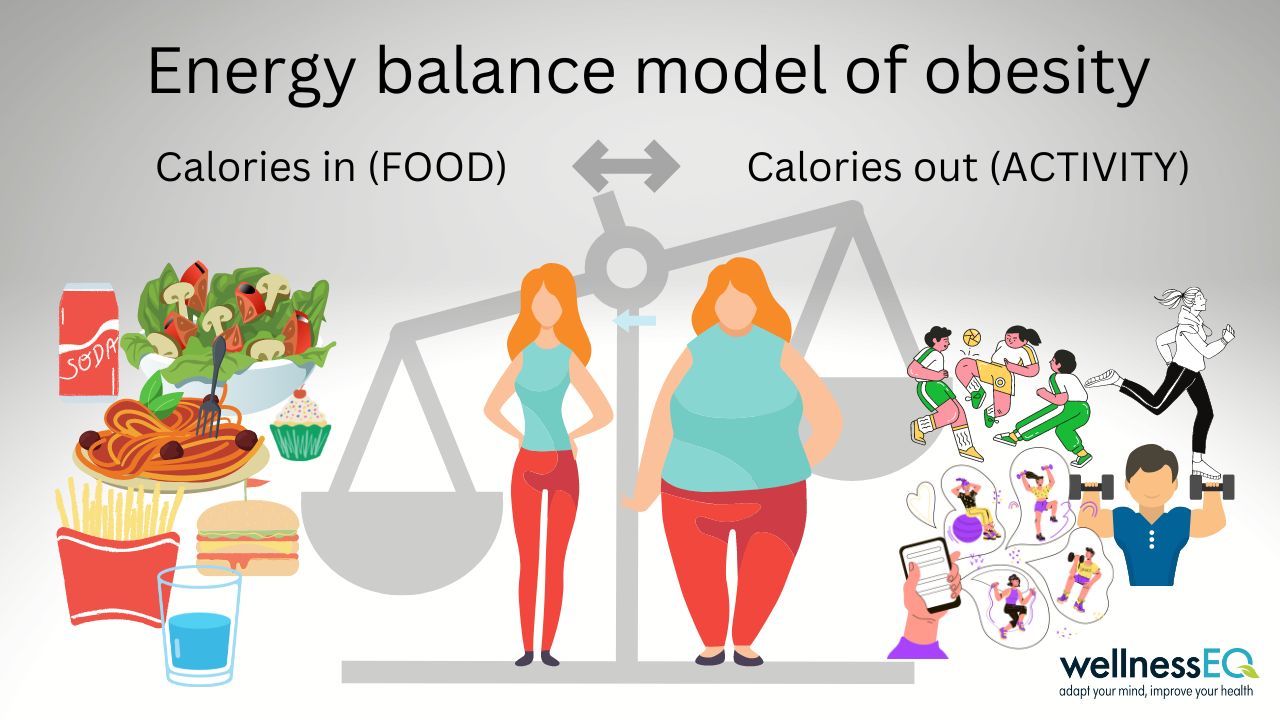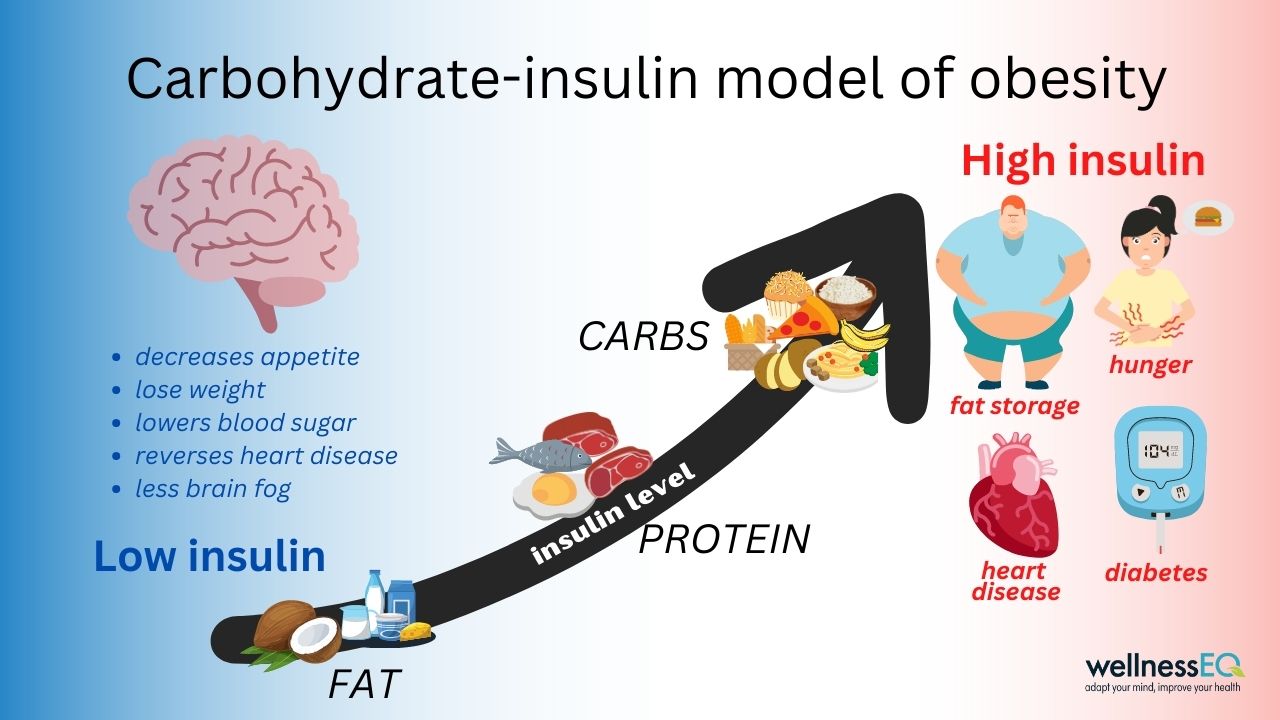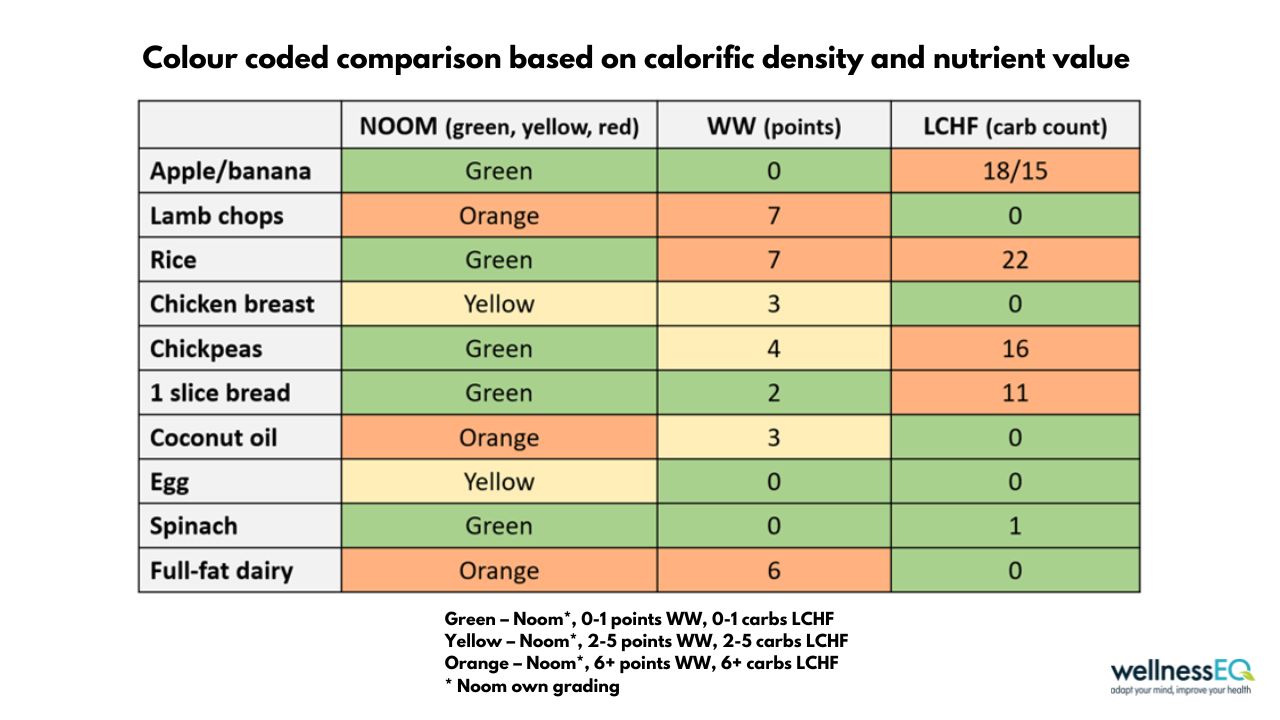Weight loss programs – an unbiased evaluation

Written by Dr Estrelita van Rensburg
Are you scouring the internet in search of a diet or weight loss program that suits you? You may be asking ‘What is the difference between a calorie-restricted diet or a low-carb or a keto diet?’ or ‘Does it even matter knowing the difference – as long as it works it is good enough for me!’
These are all good questions. We can certainly understand the need to know the difference, since it is a choice you make which will influence an important aspect of your life – what you eat. It is a commitment you make in order to reap the benefits!
At Wellness EQ, we only offer support for a low-carb/keto program, but the truth of the matter is, low-carb/keto may not be the best for you. In fact, a calorie-counting program might be a better option.
This article is going to explain the pros and cons of each type of diet in an honest and transparent manner. This way, by the end, you’ll be able to identify which is the best for you.
There are two models that aim to describe the reason for weight gain and obesity. They are the energy balance model (calorie-counting) and the carbohydrate-insulin model (hormonal).
Let’s dig into the facts.
Energy balance model (calorie-counting)
This model measures the number of calories that we eat (calories in) and the number of calories expended in daily activities (calories out). If the intake is greater than the amount expended, the extra calories are stored as fat. Basically the model is a simple numerical calculation – a mechanical process similar to the engine of a car – amount of fuel in and amount of fuel used.
How were calories discovered?
In the mid-nineteenth century a group of the German scientists performed experiments that showed what the heat-producing or energy-producing values of food are when oxidized in the body. The simple formula for this is: food + oxygen = energy + carbon dioxide (CO2).
These energy (or heat) values were called ‘caloric values,’ and are still used today. Of the three macronutrients (fat, protein and carbs), fats or lipids generate more than double the number of calories per gram of food compared to that generated by food consisting of carbohydrates or protein.
How is the calorie model used for weight loss?
According to the model the calorie value of a particular food item is the only variable that matters. We grow fatter because we eat too much no matter what type of food we eat. The only way to address this is to do one or more of the following:
- eat less – less calorie input
- focus on eating food with low calorie values
- increase activity in order to burn more calories
The second point in the list above refers to the fat content of food. Since high-fat foods contain many more calories relative to low-fat foods, this model underpins the desire to consume fatty foods sparingly, if at all.
Further impetus to deselect fatty foods came from the ‘fat diet-heart theory’ which became very popular in the second half of the twentieth century. It was reinforced in the minds of Americans and Europeans when their governments’ dietary guidelines (introduced in the early 1980s) advised them to restrict dietary fat intake, and limit all fat intake to the low-fat variety. Read more about this in our blog – Is fat good or bad?
Henceforth, these calorie-dense foods were marked as enemies to women's waistlines, perhaps only to be used as a treat for special occasions or as a reward for meeting weight-loss goals!

Examples of successful programs based on calorie counting
For our comparison, we selected two very successful programs whose philosophy is based on the energy balance model.
The first company is Weight Watchers (now called WW), founded in 1963 in New York by Jean Nidetch. Nidetch who, at the time, had been overweight for most of her life, became discouraged by years of fad dieting, using pills and hypnosis, which did not prevent her from regaining weight.
She started her own weight loss support group at home by inviting some of her friends to once a week to discuss their goals, tips and challenges for weight loss success. This became a huge success.
Her winning formula of Weight Watchers quickly spread across America, and soon, it would spread across the world. The popularity of this program grew steadily with 4.6 million members worldwide in 2019 and was voted #1 Best Diet for Weight Loss 9 Years in a Row by the U.S. News & World Report.
The second program we selected for this category is Noom, founded in 2008. Noom combines the principles of calorie energy balance with a customer focus on behavior change through psychology.
It launched its own app in 2016 and by 2021 had 45 million app downloads in 100 countries including the US, UK, Canada, Australia, Ireland and New Zealand.
The carbohydrate-insulin model of obesity (hormonal)
This model rejects the previous simplistic mechanical model, because the human body is a far more intricate system. For example, our digestive system involves various hormones and enzymes which regulate the breakdown, transport, absorption and release of energy from food.
Another key point is that different types of food (protein, fat and carbohydrates) elicit different hormonal responses. One hormone in particular, is very important in this regard.
The role of insulin cannot be discounted
The hormone insulin is secreted by the pancreas when we eat food, while the amount released is impacted by the type of food we eat.
The highest levels of insulin are secreted after a carbohydrate-rich meal, less so when eating a protein-rich meal while very low levels of insulin are released after eating a fat-rich meal.
Since blood glucose (sugar) levels (the breakdown product of sugar and starch) need to be tightly controlled in the body, it is insulin’s function to lower blood sugar levels after ingesting food.
The first thing to remember is that eating carbs leads to high blood glucose levels, and any excess glucose not used for energy production will turn into fat in the liver and fat cells by insulin. For that reason insulin is known as the ‘fat-storage hormone’.
Not only are extra carbs stored as fat in the body, they also stimulate hunger through high insulin levels. Insulin inhibits the effect of the hormone leptin from acting on the brain to reduce hunger – it stimulates appetite!
In summary, this model proposes that we lower the intake of carbs (sugar and starch), in order to keep insulin levels low. To put it another way - we need to focus on eating protein and fat. It will stop fat storage and increase the utilisation of fat from our fat stores for energy. In addition, low levels of insulin will prevent us from feeling hungry.

High insulin levels over time can lead to serious diseases
Over time, high insulin levels have been associated with a number of chronic diseases such as high blood pressure or other cardiovascular complications, type 2 diabetes, breast or prostate cancer, Alzheimer's dementia, etc. Read more about this in our blog Chronic Illness and Diet.
Scientific studies have shown that lowering insulin levels through restricting carb intake leads to an improvement in many chronic health conditions as well as significant weight loss. This type of diet is known as the low-carb, high fat (LCHF) diet. If the amount of daily carb intake is kept very low (<25g/day), it is called a Keto diet. An example of this type of program is the Atkins diet, which became very popular in the US in the 1960s.
Three-way comparison between Noom, WW and LCHF
In this comparison we look at different aspects of the three programs mentioned. Although both Noom and WW utilise the calorie counting model, there are differences in how they grade different food items.
Overview of Noom
Noom uses green, yellow, and orange colour coding to let you know which foods may help or prevent you from reaching your weight loss goals. They label fruits, veggies and whole grains as green foods, since these are the least calorie-dense and contain the highest concentration of healthy nutrients. Yellow foods have mid-level calories (lean meats and starches), while orange foods are the most calorie-dense, and the least nutrient-dense (fatty meats and desserts).
The Noom green list includes wholemeal bread, skimmed milk, cucumbers, spinach, apples, bananas, fat-free yogurt, broccoli and brown rice – these items are all supposed to contain the highest concentration of healthy nutrients.
Unfortunately, they don’t provide any information why they label meat as being nutrient-poor, while skimmed milk, bread and rice are nutrient-rich food. Basic food composition databases will tell you that it is not the case.
Overview of WW
WW use a proprietary points system based on the calorie value of food, age, weight, height and gender of the participant. They refine the Points value by looking at the following nutrition info (calories, saturated fat, protein, sugar and fibre content) of every food and drink item.
For example, saturated fat and added sugar drive up the Points value; while fibre, protein, and unsaturated fats drive it down. A daily allowance of points helps participants to make food choices to keep them on track for weight loss.
WW also have zero (0) foods, which are: non-starchy veggies, fruit, 99% fat-free yoghurt and cottage cheese, eggs, fish and shellfish, poultry, tofu and tempeh, corn and popcorn, beans, peas, and lentils. From this list it is clear that WW, although prioritising calories, has a more nuanced interpretation of the nutrient value of food, since they include animal protein in their zero category.
Overview of LCHF
The LCHF program differs markedly from Noom and WW food choices – which is to be expected, since it operates on a different model. The principle of LCHF is that only protein and fat are essential for life – we do not need to eat carbs to survive. In fact, if we eat a diet consisting of high carb content, it will ultimately damage our health because of high insulin levels.
In the LCHF diet, the carb content of each food item is calculated and based on how high the value is, is included or excluded (e.g., most fruit, refined/processed carbs such as flour, rice, pasta, bread, rice are all excluded).
Fat and protein, especially animal-based products are excellent choices for LCHF – there is no concern about consuming these, since our ancestors thrived and evolved big brains and healthy bodies on this for millions of years (see blog – What did our ancestors eat).
Colour coded comparison of 10 food items
We selected 10 food items to demonstrate how different these programs work when it comes to food recommendations. Of the 10 items only one (spinach) scored well in all three programs (green category).

Two items scored similarly for WW and LCHF, but fell into a different category for Noom. The first - rice, scored badly with both WW and LCHF, but green with Noom, while the egg fell into the green category for both WW and LCHF, but scored only mid-range for Noom.
For the rest (7 items) there is an inverse relationship between Noom and WW on the one side and LCHF on the other side. The reason for that being that animal protein and fat have high calorific values (bad choices for Noom and WW, good for LCHF), while fruit has high carb values (bad choice for LCHF, but good for WW and Noom).
General comparison of Noom, WW and LCHF
The table below lists some of the important aspects of each program by highlighting similarities or differences in cost, foods to eat or avoid, food grading systems, recipes and app availability.
| NOOM | WW | LCHF | |
| Type of diet | Calorie counting | Calorie counting | Carb counting |
| Cost | Free trial for a week, paid subscription after that. It’s about $60 a month, but you can buy multiple months upfront for less money. | Different levels for monthly payments- Basic level ($19.95), if you add weekly workshops ($44.95) and if 1:1 coaching required ($54.95). | Free info available from internet*; various online programs/ subscriptions available starting from $12/month. |
| What can you eat? | Nothing off limits but grading system applies. | Anything as long as you stay within the allocated points count. | Real food - animal and plant based - for protein and fat (full fat). |
| What can’t you eat or get penalised for? | Full fat products, saturated fat, followed by animal protein. Recipes recommend low-fat or fat-free products. | Foods high in saturated fat and full fat products as well as added sugar get higher points while foods that are high in protein get fewer points. | Food with high carb values such as root vegetables, most fruits, all processed food & drinks, legumes and beans. |
|
Healthy food category (Green list or low points) |
The green food list includes wholemeal bread, skimmed milk, cucumbers, spinach, apples, bananas, fat-free yogurt, broccoli and brown rice - these products have the lowest calorific density and the highest concentration of healthy nutrients. | Non-starchy veggies, fruit, 99% fat-free yoghurt and cottage cheese, eggs, fish and shellfish, poultry, tofu and tempeh, corn and popcorn, beans, peas, and lentils. | Butter, full fat dairy, cheese, meat, poultry, fish, shellfish, eggs, green veggies, avocado, olive oil, coconut oil and berries. |
| Grading system | Green, yellow and orange – grading based on calorific density and nutrient value. | Proprietary points system based on calories, age, height, weight and gender. Daily points allocated. | None, other than the carb content of food. |
| Food logging | Yes – recommended daily intake of different categories - green food (30%), yellow (45%), orange (25%). | Yes – can save points for weekends and special occasions. | Yes – not exceeding daily carb count limit. |
| Weighing in | Daily | Weekly | Weekly |
| Recipes | Database of thousands of recipes. | Database of thousands of recipes. | Internet database of thousands of recipes or bespoke programs. |
| App available | Noom App – weight loss with psychology – about habit and behaviour change. | WW App, in person meetings, coaching (plan dependent). | Various carb counting Apps available to download (free or paid for). |
*Be aware that all info on the internet may not be accurate, choose a program that you can trust.
PROS and CONS of calorie restricted vs carb restricted diets
It is certainly a lot of information to digest! Information helps us to make informed decisions and, as with all programs, there are pros and cons associated with each.
For this section, we only use two categories: calorie restricted/low-fat (which is the basis for both Noom and WW) and carb restricted/high fat (LCHF).
| Calorie restricted, low-fat | Carb restricted, high fat | |
| Weight loss | Yes | Yes |
| Health benefits – diabetes remission, lower blood pressure, insulin resistance and chronic inflammation | No improved health outcomes. | Yes, all possible when adhering long-term to the diet, since the aim is to drive insulin levels down. |
| Loss of muscle mass | Possible if calorie-restricted diet is low in protein. | No, protein and fat intake are prioritised. |
| Fatigue and nutrient deficiencies | Yes, if diet restricts/penalise animal protein intake - may not provide sufficient amounts of iron, folate or vitamin B12, which can lead to anaemia and extreme fatigue. If diet recommends low-fat/no-fat dairy products, will negatively impact absorption of critical fat-soluble vitamins. | No, prioritise animal fat and protein intake which contain all the essential macronutrients, vitamins and minerals. Full fat products are essential for the absorption of all the fat-soluble vitamins (A, D, E & K). |
| Increase your risk of infections and illness | Restricting calories may increase your risk of infections and illness. | No, this nutrient-dense diet provides all the essential nutrients for brain and body health, including the immune system. |
| Constipation | Possible – try a fibre supplement or eat more fibre rich food. | Possible - drink plenty of water and add some extra salt. |
| Keto-flu | Not an issue | Possible during first two weeks as your body adapts to the diet - your kidneys excrete extra sodium (salt) and fluid. In order to avoid light-headedness, add extra salt to your daily intake or drink one or two cups of bouillon or broth (chicken, beef or vegetable). |
| Hunger | Yes – restricted calorie intake leads to hunger. Up to 80% of people regain weight and more once they go off their diet. Many people crave eating sugary foods when they’re hypoglycaemic (low blood sugar) - this leads to the common cycle of high and low blood sugar swings that cause people to overeat or binge on junk foods. | No – can eat protein and fat until satiated. These food products will keep you feeling full. If you start eating food with high carb values, your weight will increase and hunger will return. |
| Salt restricted | Yes | No – in fact extra salt intake recommended. |
| Sugar/flour addiction | Intake of sugar and flour allowed but amount restricted. | Intake not allowed, need to address addiction. Can be a show stopper if addiction cannot be overcome. |
| Fasting | More difficult – three meals with snacks recommended. All refined carbohydrates stimulate hunger. | Much easier with this diet, since the food is nutrient dense and satiating. A daily 16-hour fast is doable once you become keto-adapted. |
Make a choice of what suits you best
A calorie counting program such as Noom or WW might be suitable when you are not concerned about your health and you don’t have a family history of diseases such as high blood pressure, type 2 diabetes, cancer or dementia.
It probably means that you fall into the category of people that are not very sensitive to carbs, and that your body can tolerate a higher carb load without adverse effects. A calorie restricted diet may suit you just fine.
Overall, brands such as WW have a good reputation — especially since the company and program have been around for decades. Users of Noom find their app’s design intuitive, fairly simple to use with daily lessons and food tracking.
If you are a strict Vegan, the LCHF diet is not for you. On the other hand, if you are concerned about your health you may want to lean towards LCHF – a great way to improve your health and weight at the same time.
Finally
Well, there you have it. A crash-course in dietary models and a snapshot of the diet industry today. So, what do you think?
Have some aspects of the diet industry advanced more than others in the past 60 years? Have some programs evolved to stay relevant with our modern lifestyle or does it make sense to look back at how we ate in historic times?
You be the judge. Only you can decide which type of food and program best meets the needs of your family.
But regardless of what diet you end up with in your kitchen, we wish you the best of luck! And thank you again for spending your time with us here.
If you’d like to continue learning, please check out these other resources.
Related articles
- Is fat good or bad?
- Chronic illness and diet
- What did our ancestors eat?
- Priority Micronutrient Density in Foods
- Improvement in Glycemic and Lipid Profiles in Type 2 Diabetics with a 90-Day Ketogenic Diet
- Sugar and starch addiction
- Alzheimer’s dementia
- The brain needs animal fat
- Obesity: Stop Shaming, Start Understanding
- Food fights: Are Vegan diets Healthier?
- A Low-Carbohydrate as Compared with a Low-Fat Diet in Severe Obesity
- Hiding unhealthy heart outcomes in a low-fat diet trial: the Women’s Health
If you are interested in learning more about our approach...

